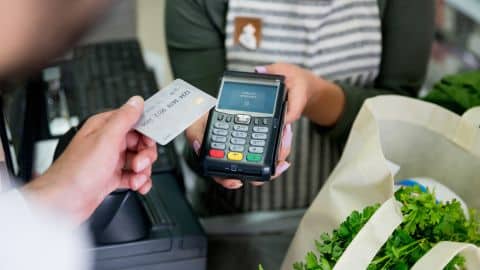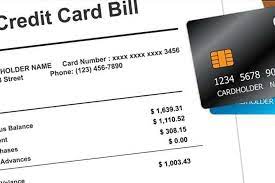Cooking at home is less expensive than eating out. Choose a rewards credit card that can help you earn over $100 a year on groceries if you want to stretch your grocery budget even further.
Based on the most recent spending data from location intelligence company Esri, a sample budget shows that the average American spends $5,174 per year on groceries, which is close to $431 per month. That is more than the average American spends on dining out ($3,675 per year).
Up to 6% cash back at supermarkets is available with the best credit card for groceries. While wholesale clubs like Costco and BJ’s are normally excluded, as are big box retailers like Target and Walmart, you may still take advantage of these rates at Whole Foods, Krogers, Albertsons, and other well-known grocers. The majority of the best credit cards for groceries also have interest-free periods, giving you more time to pay off any debt.
Best Credit Card for Groceries
Everyone needs to eat, and while dining out or ordering takeout is less messy than cooking at home, studies show that most Americans spend more money on food at home. If you’re going to spend a lot of money on groceries every month, you should try to receive something in return. Many rewards credit cards give you extra points for groceries and other perks, so it’s a good idea to use them for all of your purchases. Here are our top selections for the best credit card for groceries that also offers rewards at supermarkets.
#1. Blue Cash Preferred® Card from American Express
The American Express Blue Cash Preferred® Card is the market-leading card. It gets 6% cash back at US supermarkets on purchases up to $6,000 a year (then 1% cash back), 6% cash back on certain US streaming subscriptions, 3% cash back at US gas stations and on public transportation (including taxis, rideshares, parking, tolls, trains, and buses), and 1% cash back on all other purchases. Terms and conditions apply. Incentives for spending $5,000 each year in supermarkets in the United States: $300
Pros
Besides the amazing rewards rates, you can also earn a cool new-cardholder bonus: You’ll get a $250 statement credit after spending $3,000 on your new Card in the first six months. Terms and conditions apply. There’s also an excellent 0% intro APR offer.
Cons
There is an annual fee, and it is quite high for a cash-back card: $0 for the first year, then $95. Nevertheless, if you spend approximately $31 per week at the supermarket, you’ll more than makeup for it in cash back—and that doesn’t even include rewards earned in the card’s other bonus categories.
#2. Citi Custom Cash℠ Card
The Citi Custom Cash℠ Card has no annual fee and will automatically pay 5% of your highest-spending eligible category each month. Grocery stores are among the categories. Incentives for $5,000 in grocery spending per year: $250 (assuming it’s your top category each month).
Pros
You receive 5% cash back on your top eligible category spending up to $500 per month and 1% cash back on everything else. You don’t have to choose or “activate” your category; it’s done automatically, so you’ll always get 5% in the category that pays the most. This card also comes with a great bonus offer and a great introductory APR of 0% for new customers.
Cons
Take note of the $500 monthly spending limit for the 5% rewards rate, which means the maximum you can receive in additional rewards each month is $25. Take note of the low rewards rate outside of your lone bonus category for the month as well.
#3. American Express® Gold Card
On purchases totaling up to $25,000 per year, the American Express® Gold Card gets 4 Membership Rewards points for every dollar spent at U.S. supermarkets. And what if you’re sick of cooking? You can also get 4 points for every dollar spent in restaurants, with no annual limit. Terms and conditions apply. The reward for $5,000 in annual grocery spending in the United States is $200 (assuming a redemption value of 1 cent per point).
Pros
On flights booked directly with airlines or through amextravel.com, in addition to its 4X categories, this card offers 3 points per dollar. There is also a welcome bonus: Spend $4,000 on eligible purchases with your new Card within the first 6 months of Card Membership and earn 60,000 Membership Rewards® points. Terms and Conditions apply. The card also comes with a host of benefits that can help offset the card’s steep annual cost.
Cons
A $250 yearly charge is required. This credit card is intended for a person who spends a lot of money on groceries and enjoys traveling. If you don’t travel frequently, skip the 4X points and search elsewhere.
#4. Capital One SavorOne Cash Rewards Credit Card
The Capital One SavorOne Cash Rewards Credit Card is a fantastic companion if your food spending includes as many trips to restaurants and takeout joints as trips to the grocery store. You’ll get an unlimited 3% cash back on dining, grocery shopping, and entertainment, including streaming services; 8% cash back on Capital One Entertainment purchases; 5% cash back on hotels and rental cars booked through Capital One Travel (terms apply); and 1% cash back on everything else. $150 in rewards for spending $5,000 every year on groceries.
Pros
Aside from the fact that there is no annual fee, there is a great 0% intro APR offer and a sign-up bonus: spend $500 in the first three months and get a one-time $200 cash bonus.
Cons
If you don’t eat out frequently, you’ll miss out on a significant portion of this card’s value. Look somewhere else.
#5. The American Express Blue Cash Everyday® Card
The American Express Blue Cash Everyday® Card earns 3% cash back at supermarkets, gas stations, and online retail transactions in the United States (on up to $6,000 in spending per year in each area). Other purchases get you 1% cash back. Terms and conditions apply. Incentives for spending $5,000 each year in supermarkets in the United States: $150.
Pros
This card boasts a fantastic 0% intro APR period as well as a welcome offer: Get a $200 statement credit after spending $2,000 on your new card during the first six months. Terms and conditions apply. The annual charge is zero dollars.
Cons
If you spend at least $61 a week at the grocery store, you might be better off paying the annual fee on the American Express Blue Cash Preferred® Card because you’ll benefit from the higher rewards rate.
#6. U.S. Bank Cash+® Visa Signature® Card
Every three months, cardholders of the U.S. Bank Cash+® Visa Signature® Card can choose their trip. You choose one of three unlimited 2% cash-back categories, including grocery stores. You can also choose two 5% cash-back categories from a list of 12 each quarter, up to $2,000 in total spending. Get 1% back in other places. $100 if you spend $5,000 on groceries in a year.
Pros
There is no annual charge, and you can get a $200 bonus after spending $1,000 on eligible purchases within the first 120 days of starting your account.
Cons
selecting and tracking categories Each quarter can be a tremendous pain. Consider the Chase Freedom® and select Discover cards, such as the Discover it® Cash Back, for comparable rotating bonus categories with fewer to keep track of.
#7. Citi® Double Cash Card
You don’t want to carry a separate credit card only for groceries, right? A nice one-card option is the Citi® Double Cash Card. It gives you 2% back on all purchases—1% when you buy it and 1% when you pay it off. $100 in rewards for spending $5,000 each year on groceries.
Pros
The simplicity of this card is its not-so-secret weapon: no bonus categories or spending caps to cope with. The annual charge is zero dollars.
Cons
This offer does not contain a 0% introductory APR period or a sign-up incentive.
#8. Bank of America® Customized Cash Rewards Credit Card
On up to $2,500 in combined spending per quarter, the Bank of America® Customized Cash Rewards credit card offers 2% cash back in grocery shops and wholesale clubs and 3% cash back in an area of your choice. You’ll also get 1% cash back on all other purchases. You can earn a bonus of 25%, 50%, or 75% of your rewards if you qualify for Bank of AmericaPreferred®’s Rewards program, depending on your account balances. Maximum rewards on $5,000 in grocery store spending per year: $100 (Preferred Rewards customers: $125, $150, or $175).
Pros
There is no annual fee, a 0% intro APR period, and you can get a sign-up bonus of $200 in online cash rewards after making at least $1,000 in purchases during the first 90 days of account setup. This card is worth considering even if you aren’t eligible for Preferred Rewards because you can choose your 3% category (from petrol, online shopping, restaurants, travel, drugstores, or home improvement/furnishings).
Cons
The combined quarterly spending limit on the 2% and 3% rewards complicates matters. If you make a large purchase in your 3% area, you may only earn 1% at the grocery store for the rest of the quarter.
#9. Instacart Mastercard®
People who use Instacart’s grocery delivery service a lot should look into the Instacart Mastercard®. It gives 5% cash back on purchases made through Instacart and comes with a free year of Instacart+. Incentives for $5,000 in grocery spending per year: $250.
Pros
You can get 5% back on Instacart purchases, both online and through the app, as well as 5% back on Chase travel, 2% back on restaurants, gas stations, and select streaming services, and 1% back on other transactions. There’s also a bonus offer: Upon approval, you will be given a free year of Instacart+ as well as a $100 Instacart credit. Membership automatically renews. Terms and conditions apply. Instacart+ offers decreased service fees as well as free delivery on purchases over $35.
Cons
The free Instacart+ subscription will renew at the standard rate, usually $99 a year, even though the credit card has no annual fee on it.
Which is the Best Credit Card for Grocery Shopping?
The American Express Blue Cash Preferred Card is one of the best credit cards for groceries since it offers 6% cash back on up to $6,000 spent per year at U.S. supermarkets (as well as 6% back on U.S. streaming subscriptions).
Should I Get a Credit Card for Groceries?
Absolutely, you should pay for your groceries using a credit card. Using a credit card for grocery shopping is a fantastic option since it is quick, secure, and a terrific way to earn rewards—with the potential to save you up to 6% on every purchase.
Which Amex is Best for Groceries?
With the Amex Blue Cash Preferred, you may get 6% cash back at US supermarkets on purchases up to $6,000 each calendar year (then 1%).
What is the Best Credit Card for Amazon Groceries?
If you shop often at Amazon.com and Whole Foods, the Amazon Rewards Visa Signature Card is a great deal. A bonus cash-back category, Visa Signature perks, and no annual fee round out the package. Credit score ranges are based on FICO® credit scoring.
Should I Have 3 Credit Cards?
In addition to other sources of credit, two to three credit card accounts are typically recommended if your objective is to achieve or maintain a decent credit score. You may be able to increase your credit mix by using this combination. In your credit report, lenders and creditors prefer to see a diverse range of credit types.
Is the Costco Credit Card Worth It?
If you have a Costco membership and an excellent credit score, you should apply for the Costco Credit Card.
Conclusion
We looked at a lot of different credit cards on the market to come up with this list of the best credit cards for groceries. The highest focus was given to rewards programs for groceries. We also analyzed each card’s welcome bonus, yearly fee, and other characteristics. We used our methods to create this ranking of the best credit cards for groceries to help you choose the best one for your needs.
Related Articles
- 7 Practical Budgeting Tips to Save Money
- HIGHEST COST OF LIVING STATES: Top 10 Picks in the US 2023
- How To Save Money Fast: 10 Best Ways to saving Money In 2023
- Costco Business Center and Warehouses: All You Should Know
- Best Business Credit Cards For Startups In 2023






